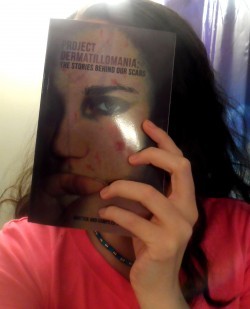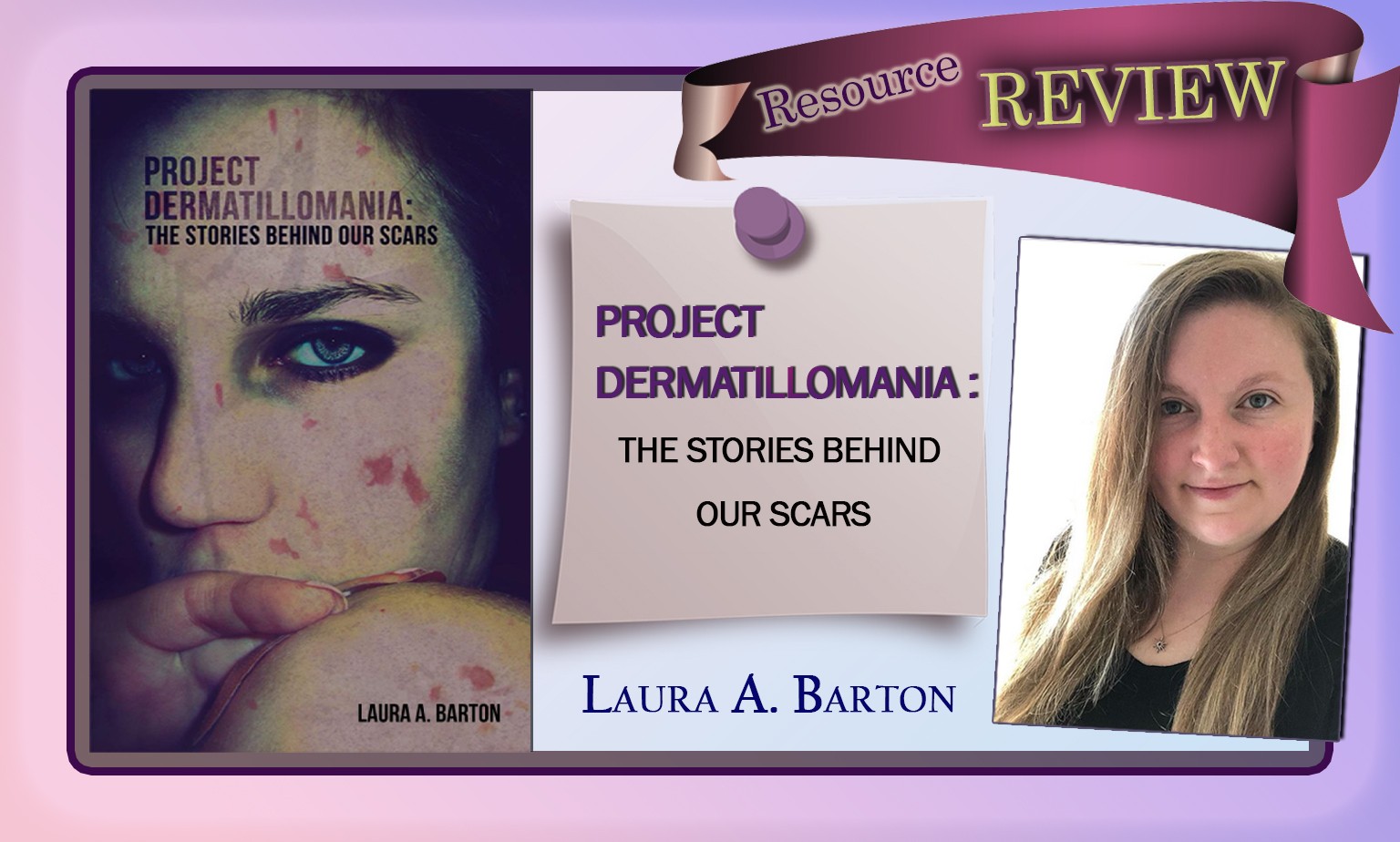Compiled by Laura A. Barton, Project Dermatillomania: The Stories Behind Our Scars is an easy yet gripping read containing eleven stories of people with excoriation disorder who met each other through the Facebook group Dermatillomania Awareness. This book is simplified only in terms of reading level, but certainly not in content. If you are one of the billions who do not know of or understand the complexities of this disorder, this book provides detailed and first-hand honest accounts of the sufferers and how they have been affected.
The detail put into this book is refreshing. Each chapter is designed to be solely about the writer with pictures to put beside the story. While online support forums show the raw realities of how this disorder affects sufferers, it doesn’t quite suffice in understanding everything that led up to an individual post. Project Dermatillomania graduates from words to visuals by placing the image of the writer at the beginning of each story to link more faces to this disorder which adds an element of personalization- especially considering that many of the profile images don’t show the physical effects of skin picking which begs the question, how many people out there do you know with similar pictures that are hiding their own little secret?
This review cannot be fully unbiased as I’ve become friends with the author Laura Barton and we’ve had a history that was triggered by my own journey and release of FOREVER MARKED: A Dermatillomania Diary. Emotionally, this collection of stories really struck me and it also mentions my memoir in a good number of spots which proves a domino effect of what can happen when you step forward and expose your own story. Over the years people have seen that with my journey, the rugged condition of my skin included, that it hasn’t prevented me from gaining milestones that I once prevented myself from achieving and that “coming out” doesn’t mean that the world as you know it will come down crashing. To know directly that I have influenced some writers of this series is sometimes downright unfathomable because it validates and solidifies my own efforts in continuing down the path of advocacy, no matter how frustrating it can become with people scared to spread awareness in fear of being ousted.

It’s respectable how Laura mentions straight off the bat that if you are looking for a “how to stop picking” book, this one isn’t for you. Like with my memoir, one of its aims is to spread awareness while educating the world about dermatillomania and to eradicate the shame surrounding this disorder. For people such as myself with such a chronic case of this disorder it is realistic to say that we may not ever stop picking but more messages are needed to be put forth that this isn’t a death sentence and that, yes, we can still do what we love while finding our own comfort levels to do them at.
We need early intervention, more trained mental health practitioners, general knowledge in schools/ workplaces/ non-profits, and research if we have a hope of ever overcoming this compulsion. As Laura directly states, which evoked a powerful reaction of awe for me, “Somewhat akin to picking, the desire to break out of depression might be there but the ability to do so might not be”. Perhaps some day we will reach equal recovery rates to other disorders but for now, it’s up to the rest of the world to stand up on our behalf because we cannot do this alone.
Reading each story I found components I could relate to whether it was the age of the manifestation of this disorder, co-morbidity with other mental health issues, or the shameful thoughts as repetitive as the behavior itself (sometimes, far more damaging than what shows on the skin). To mention a few examples, Danielle and I both had push/ pull unhealthy relationships and ambiguity when it came to schooling, with Marty’s story I too use instruments to pick with, and I also relate to Valerie’s story with skin picking being in the family. There are more but I don’t want to add any other observations that may spoil give away too much content.

While there are some mild and overlooked errors throughout, this isn’t the basis of the book; if you try to discredit its content because of these petty misnomers you risk missing out on a lot of emotional growth and personal development from reading these stories.
There’s finally a book that I can show people and say, “read this… that’s me” from several of the first-hand accounts in this book. I hope that Project Dermatillomania continues to unfold by revealing more stories in a second and third addition to the series, preferably longer than its foundational first. If you have dermatillomania and want to feel less alone while getting the opportunity to adopt the insight these writers have toward the condition through years of research and experience, please take a moment and add this to your shelf.
For more about Project Dermatillomania visit the website or
